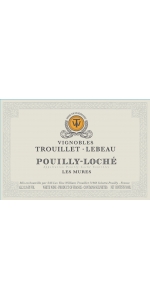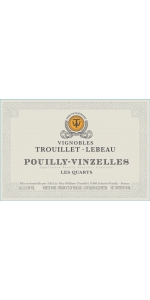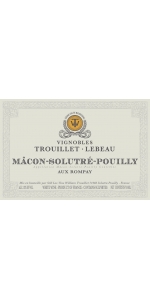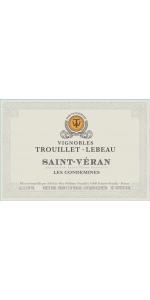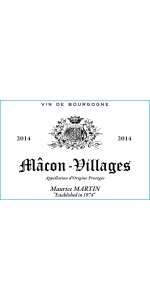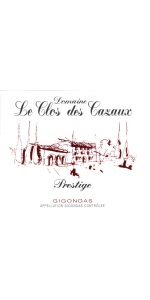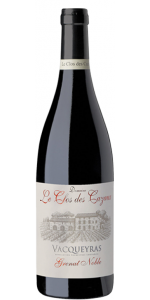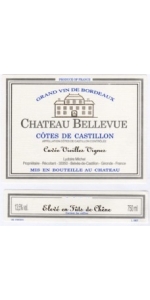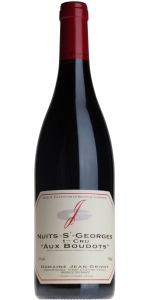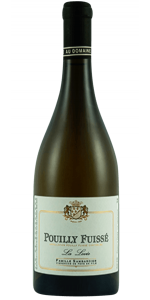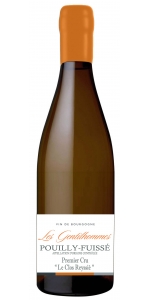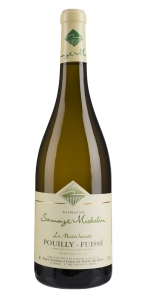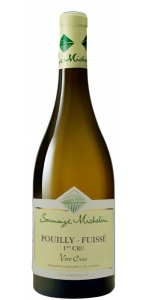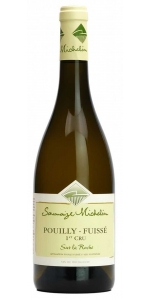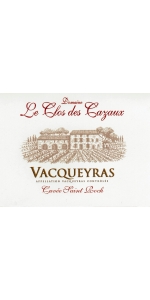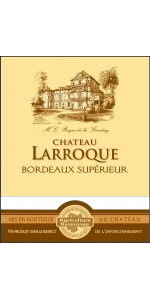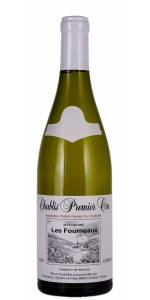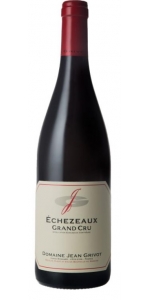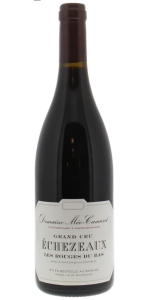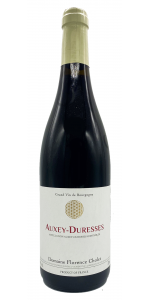Products meeting the search criteria
Trouillet Lebeau Pouilly-Loche Les Mures is made from 100% Chardonnay.
Pouilly Loché is the smallest appellation in the Mâconnais (33 hectares). The climate called "Les Mures" is located on a hillside, facing east, overlooking the Saône Valley at an altitude of 250 meters, in the village of Loché, 5 kilometers south-east of Mâcon. Loché has been a site devoted to vines since the Roman times. Excavations during the construction of the TGV station, which puts this vineyard 1 hour 40 minutes from Paris and Geneva, revealed the foundations of a large villa. Thereafter, the vine flourished under the influence of the monks of Cluny, who are reminded of the magnificent 12th century octagonal bell tower behind which the rocks of Solutré and Vergisson stand out.
The wine offers delicate and precise aromas of ripe yellow fruits. Dense, fleshy and fruity in the mouth with a fresh menthol finish.
Trouillet Lebeau Pouilly-Vinzelles Les Quarts is made from 100 percent Chardonnay.
The wine comes from a very small parcel located in the climate of "Les Quarts" benefiting from an eastern exposure that is perfectly suited to Chardonnay, allowing early harvests and giving rich and powerful wines. Neighboring the archaeological complex of Solutré, the Vinzelles appellation is based on the same Jurassic (Bathonian and Bajocian) rocks that crown the Mâconnais mountains.
Rich aromas of peach, apricot and grapefruit, evolving with age towards fresh almond, hazelnut, honey, quince or toasted bread. This Pouilly-Vinzelles "Les Quarts" balances its natural minerality with fatness and opulence.
Trouillet Lebeau Macon Solutre Pouilly is made from 100 percent Chardonnay.
The Macon-Solutre-Pouilly is produced from the 2 hectare-parcel called "Au Rompay", which is the highest of the estate, located at the southern tip of the Mâconnais in the Mont Pouilly, across the famous Solutré Rock. The grapes are usually harvested in the very last days, bringing freshness and minerality to the wine.
The nose opens generously with sweet notes of candied and citrus fruits. The maturity and ripeness of the fruit combine with an aromatic freshness and a real delicacy in the mouth. The wine is structured, but still lively on the finish.
Trouillet Lebeau St. Veran Les Condemines is made from 100 percent Chardonnay.
The wine comes from 70-year-old vines that are ideally located on a south-facing slope in the village of Leynes, on a clay-limestone terroir. Aged 100% in Burgundy barrels, offering a fruity, powerful and charming wine. Beautiful expressive aromas of ripe yellow fruits. Rich, generous, full, crisp and well-balanced on the palate.
Maurice Martin Pouilly-Fuisse is made from 100 percent Chardonnay.
Fruity and floral aromas intertwined with vanilla and toasty notes. Harmonious, well balanced and elegant wine.
The grapes for this wine is coming from 2 famous part of the Maconnais' region: Vergisson and Solutré, famous for their Rocks. Hence, the minerality is coming from these rocky soils.
The wine went through malolactic fermentation.
It has been gently filtered before bottling.
Excellent with white meats and fish.
Cazaux Gigondas Cuvee Prestige is made from 50% Grenache, 30% Syrah, and 20% Mourvèdre.
A blend of Grenache, Syrah and Mourvedre produced from the oldest vines of the estate and only in the years of highest grape quality. Aromas of prune, chocolate, spices, fruit brandy and plum. Rounded tannins and a long finish.
Red meats aged, venison
Review:
"I was also able to taste the late-release 2020 Gigondas Cuvée Prestige, which is 50% Grenache, 30% Syrah, and 20% Mourvèdre that was brought up in barrel. It has a rocking nose of Provençal spices, saddle leather, dried flowers, and assorted strawberry and raspberry fruit. It's medium to full-bodied, has fine tannins, beautiful overall balance, and a great finish. Count me in as a fan. Enjoy bottles any time over the coming 7-8 years."
- Jeb Dunnuck (October 30th 2023), 94 pts
Cazaux Vacqueyras Rouge Grenat Noble 100% Grenache.
This wine is the result of extraordinary weather conditions. The first cuvée was produced in 1992 when violent storms and floods affected the region (especially Vaison la Romaine). The following days were radiant and accompanied by Mistral winds. We could then continue to harvest or more precisely harvest what remained of a rotten crop - but a noble rotten crop!
Following our first involuntary test of 1992, we wanted to reproduce this wine but we had to wait until 1995 to isolate the parcels that were capable of producing this noble rot. Unfortunately, the "noble" phenomenon does not occur every year despite late harvests (October 15).
The resulting wine is offers aromas of small red berries (cherries, raspberries), liquorice, fig, honey, fruit brandy and plum. It is elegant, supple and smooth on the palate with a firm, generous and suave structure. A beautiful length on spices and cherry.
This Grenache nectar marries will with dishes such as pan-fried foie gras in honey and fig preserve, leg of lamb with preserved fruits accompanied by local cereal "epautre" or other sweet and sour dishes.
Review:
"Not yet bottled, the 2020 Vacqueyras Grenat Noble should also be outstanding. Based mostly on Grenache, but with a small amount of Mourvèdre, it has a Provençal bouquet of red and black fruits, dried garrigue, toasted nuts, and spice. Rich, medium-bodied, and nicely textured, with a great finish, I'd be thrilled to have a bottle on the dinner table. It will keep through 2032."
- Jeb Dunnuck (March 2023), 91-93 pts
Bellevue Cotes de Bordeaux-Castillon Vieilles Vignes 2020 is 65% Merlot, 35% Cabernet Franc.
Average age of the vines is 40 years old.
The wine offers a rich and intense bouquet of blackcurrant, blackberry and strawberry.
It is smooth and full in the mouth with a velvety texture. Acidity combined with firm but well-integrated tannins are a fine supporting cast to the black fruit flavors at the end.
Domaine Jean Grivot Nuits-Saint-Georges Premier Cru Aux Boudots is made from 100 percent Pinot Noir.
Domaine Jean Grivot is among the great names in Burgundian wine. Étienne Grivot and his wife Marielle took over from Étienne’s father Jean Grivot in 1987. The vineyards are densely planted and farmed organically “sans certification” while the aim in the cellar is for balance and clear expression of terroir.
Jean Grivot’s 38.3 acres spread across 22 appellations with vineyards in the communes of Vosne-Romanée, Vougeot, Chambolle-Musigny, and Nuits-Saint-Georges. Besides the three grand crus, there are 8 premier crus including the much lauded Les Beaux Monts and Suchots in Vosne-Romanée. The grapes are completely de-stemmed and fermentation is spontaneous.
Nuits-Saint-Georges Aux Boudots 1er cru lies in the “Zone Vosnoise” or northern end of Nuits-Saint-Georges just below Les Damodes. It borders Vosne-Romanée Aux Malconsorts 1er just to its north. Its position slightly lower on the slope with deep soil full of pebbles results in a richer and fuller wine.
The grapes are destemmed and maceration à froid usually lasts just a day or two. The alcoholic fermentation is spontaneous and malolactic fermentation occurs in barrel. Depending on the vintage, the proportion of new oak is around 30-60% for the premier crus.
The wine shows aromas and flavors of red berries, herbs, and purple flowers. The palate is rich with ripe fruit and medium weight with bright acidity and fine tannins. Aging in 30-60% new Burgundian pièce brings notes of vanilla, toast, and baking spices.
Red Burgundy might be the world’s most flexible food wine. The wine’s high acidity, medium body, medium alcohol, and low tannins make it very food-friendly. Red Burgundy, with its earthy and sometimes gamey character, is a classic partner to roasted game birds, grilled duck breast, and dishes that feature mushrooms, black truffles, or are rich in umami.
Reviews:
‘The 2020 Nuits Saint-Georges Aux Boudots Ter Cru has the best aromatics among Grivat Nuits Saint-Georges with very well defined red berry fruit, briary and lignt sous-bois aromas. The palate is medium-badied with fine-grain tannins, slightly savory on the entry, fresh and saline on the finish. This has real verve and class, though it will benefit from time in bottle
-Vinous 93-95 Points
A wine with the substance and structure to support the generous lashings of new oak used for maturation, and the overall effect is elegant and classic in style. Aux Boudots, where Grivot has 0.85ha, is at the northern edge of Nuits, just over the border from Vosne-Romanée Malconsorts. They began to pick on the 3rd of September – Etienne specified that they are very particular that the tannins are ripe and do what they can to prolong the vegetative cycle. Still, the grapes were picked with an entirely correct pH of around 3.4.
-Decanter 94 Points
Famille Sambardier Pouilly Fuisse La Levee is made from 100% Chardonnay
The wine is very aromatic, with brioche, butter and citrus flavors. The length to the finish is long and balanced with great acidity and richness.
Hand harvested. Grapes were sourced from a vineyard in the village of Solutré. 10% of the wine was aged in French Oak barrels.
Excellent with poultry and fresh water fish. Delicious also with goat cheeses.
Les Gentilhommes Pouilly Fuisse Premier Cru Clos Reyssier is made from 100 percent Chardonnay.
A gentilhomme is a gentleman characterized by his delicacy, thoughtfulness, and courtesy. "Les Gentilhommes" was created by brothers Richard and Stephane Martin as brand embodying the gentleman's character combined with Burgundian know-how.
From the work in the vineyard to the vinification in barrel, they are inspired to share these noble values. Quality, authenticity and long family tradition are the foundation of these wines.
Les Gentilhommes Pouilly Fuisse Premier Cru Clos Reyssier's description
Les Gentilhommes Pouilly Fuisse Premier Cru Clos Reyssier is made from 100 percent Chardonnay.
A gentilhomme is a gentleman characterized by his delicacy, thoughtfulness, and courtesy. "Les Gentilhommes" was created by brothers Richard and Stephane Martin as brand embodying the gentleman's character combined with Burgundian know-how.
From the work in the vineyard to the vinification in barrel, they are inspired to share these noble values. Quality, authenticity and long family tradition are the foundation of these wines.
Les Gentilhommes Pouilly Fuisse Premier Cru Clos Reyssier's description
Saumaize Michelin Pouilly Fuisse Marechaude is made from 100 percent Chardonnay.
A beautiful Pouilly-Fuisse from "La Marechaude" parcel that Saumaize-Michelin acquired in 2013. Planted on clay and limestone slopes and hand harvested, this Chardonnay offers fresh and elegant notes of white flowers, crisp, citrus and exotic fruits. Powerful and mineral on the palate with a fantastic balance, finesse and freshness. The exceptional terroir brings minerality and juicy flavors of stone fruits, peach and melon supported by subtle toasty notes.
It is now a Premier Cru.
Saumaize-Michelin Pouilly-Fuisse Premier Cru Vers Cras is made from 100 percent Chardonnay
2006 marked the purchase of part of the original sharecropping of the vines, including “Les Crays”, half of which had previously been returned to the owner.
This vintage is made up of two small plots, one 50 years old, the other 30 years old, covering 24 ares. Density: 9,000 vines per hectare
Located on the southern slope of the Vergisson rock which climbs very quickly: 320M at the bottom and 390M in altitude at the top, its situation is very sunny with a lot of wind. A blue marl soil covered by the scree of the Vergisson rock, we find some iron oxide.
Hand-picked, crushed, pneumatically pressed, full fermentation in Burgundy French oak barrels (15% new). Aged for one year on fine lees. Bottled according to the lunar calendar by us, without filtration.
Nose with aromas of ripe fruit, with mineral notes. Generous palate with beautiful body. Finish with tension and salivation. Discreet in the first year, its minerality is very fine but with a lot of depth.
It is best enjoyed at 12°C with all meats in white sauce, Burgundy snails, fine fish and even certain strong cheeses.
Saumaize-Michelin Pouilly-Fuisse “Clos sur la Roche” is made from 100 percent Chardonnay.
Produced from the oldest parcel of the estate dating back from 1979 and planted on the slopes of the Vergisson Rock, "Clos sur la Roche" benefits from a south sun exposure. This beautiful Chardonnay offers abundant floral and white fruit aromas, toasty and buttery notes and brioche scents. Well-balanced and concentrated on the palate with a rich structure and refreshing notes of zesty lemon and mineral purity that brings a vibrant energy to the finish.
Complex aromas of soft citrus fruits and minerals. Densely packed and fresh, with intense, complex flavors of white fruit as well as a hint of spice. The finish is very firm, long but not dry.
This site is now a Premier Cru!
Cazaux Vacqueyras Rouge Cuvee Saint Roch 70% Grenache, 25% Syrah and 5% Mourvedre.
Deep color. Intense and persistent red fruits, such as strawberry and black cherry. Expressive and delicate at the same time. The finish is long and the tannins are quite round and well balanced.
Grapes are hand picked, destemmed 100% but not crushed. About 20 days fermentation according to vintage. Aged in stainless steel tanks for 12 months and an additional 12 months in enamel coated concrete tank. No fining, light filtration.
Enjoy this wine with meat cooked in red wine sauce (such as Boeuf Bourguignon).
Chateau Larroque Bordeaux Superieur Rouge is a blend of 51% Merlot and 49% Cabernet Sauvignon.
Nose : Red fruits, almond and hazelnut, with a faint vanilla aroma.
Mouth : The silky, velvety attack reveals a pleasant, concentrated and well structured wine. It offers a combination of fruits pastes’ flavors, licorice and toasted notes, and an elegant finish.
The 60-hectare vineyard was rapidly replanted and the château building, which dates from 1348, was restored.
Our family now produces three different-colored wines there: red, white and rosé.
Fermentation : Alcoholic fermentation in thermo-regulated stainless steel vats at around 26°C / 78°F then a gentle vatting for 3 weeks at 30°C / 86°F. Running off and pressing,separation of the press and free-run juice. Malolactic fermentation in thermo-regulated stainless steel vats at around 18°C / 64°F
- 2017 Decanter World Wine Awards Decanter 95 Points
Color : Dark garnet hue
Marie-Christine, the daughter of Henri Ducourt, purchased this prestigious left-bank property in 1979, which lies on the border of the Graves appellation.
Grown on loamy-clay soil.
Macération : Pre-fermentation cold maceration of 24 to 48 hours
Enjoy this wine with charcuterie, roasted meats, BBQ, cheeses.
Perchaud Chablis Premier Cru Fourneaux is made from 100 percent Chardonnay.
This is the south facing portion of the slope and very hot, heavy "Fourneaux" or "oven" effect.
The wine is expressive and vivacious with beautiful aromas.
Well-balanced, round and fruity wine with a fine minerality on the finish.
1er Cru Fourneaux is located on the Fleys village and faces the field. the plots are very steep and exposed full south on soil type Kimmeridgian consists of marl clay-limestone with shallow ground and a very stony ground. After a slight settling, the juice starts its fermentation in tank, then ¼ of juice is racked in barrels. Both wines perform their alcoholic fermentation and malolactic and their aging on the lees, separately. The two cuvées are blended six months after harvesting. The wine is then filtered and is bottled 15 months after harvesting. 2013 Conditions and Harvest The relatively high temperatures at the end of winter allowed an early bud vines in early March. With a hot, dry spring flower took place in good conditions. In July, a hailstorm located did some damage to our Fourchaume plot. July and early August, rainy and stormy brought the water needed by the vineyards. The dry and sunny weather of the second half of August brought the grapes to maturity. The harvest began on September 2 under cloudy skies.
Coquille St. Jacques (scallops) with leeks and cream.
Domaine Jean Grivot Echezeaux Grand Cru is made from 100 percent Pinot Noir.
Domaine Jean Grivot is among the great names in Burgundian wine. Étienne Grivot and his wife Marielle took over from Étienne’s father Jean Grivot in 1987. The vineyards are densely planted and farmed organically “sans certification” while the aim in the cellar is for balance and clear expression of terroir.
Jean Grivot’s 15.5 hectares spread across 22 appellations with vineyards in the communes of Vosne-Romanée, Vougeot, Chambolle-Musigny, and Nuits-Saint-Georges. Besides the three grand crus, there are 8 premier crus including the much lauded Les Beaux Monts and Suchots in Vosne-Romanée. The grapes are completely de-stemmed and fermentation is spontaneous.
About the Vineyard:
Echézeaux grand cru is a large vineyard of 38 hectares divided into 11 individual climats. Grivot’s parcel is in the climat of Les Cruots and lies at the southern end of Echézeaux near the premier cru of Les Suchots. A good Echézeaux should have rich fruit, considerable earthiness, and be very complete on the palate.
Tasting Notes:
The wine shows aromas and flavors of red berries, herbs, and purple flowers. The palate is rich with ripe fruit and medium weight with bright acidity and fine tannins. Aging in 40-70% new Burgundian pièce brings notes of vanilla, toast, and baking spices.
Food Pairing:
Red Burgundy might be the world’s most flexible food wine. The wine’s high acidity, medium body, medium alcohol, and low tannins make it very food-friendly. Red Burgundy, with its earthy and sometimes gamey character, is a classic partner to roasted game birds, grilled duck breast, and dishes that feature mushrooms, black truffles, or are rich in umami.
Review:
A very elegant expression of Echezeaux, with a velvety black plum and rose petal fruit. There is a lovely freshness and so much finesse that the tannin and structure might surprise you at the end. This has the substance to age for decades. Produced from a 0.84ha parcel in Cruots next to Comte Liger-Belair. The vines were planted in 1954 and the destemmed fruit was gently fermented.
This is pure, racy and enticing, hosting aromas and flavors of black currant, blackberry, violet and iron. This is about finesse, grace and precision balance, with saturated fruit flavors persisting on the superlong aftertaste. Needs a decade in the cellar.
-Wine Spectator 97 Points
Échezeaux is loyal to its appellation through the finesse of its attack on the palate and its overall balance. But it's also a wine with pronounced acidity, which gives it freshness and structure and bestows upon it a sometimes austere finish.
Florence Cholet Auxey-Duresses Rouge is made from 100 Pinot Noir 60 year old vines.
Auxey-Duresses exhibits intense and juicy aromas of cherries, raspberries, and spices. This is a charming wine that has harmonious and delicate tannins, and a fine texture in the mouth. Medium-bodied, elegant and complex with great concentration and structure.
- back
Categories
Pricing
Countries
Regions
Grape Types
Wineries
Organic/Free Shipping
Aalto P.S. Pagos Seleccionados Tinto is made from 100 percent Tempranillo.
Climatic conditions
The farming year began with a mild autumn and little precipitation. A very dry winter started with -9ºC reaching at the end higher temperatures than normal for that time of the year. Spring and summer characterized by little rain, only some rain showers in July and late August avoided the hydric stress of the vines. The vegetative cycle of the vine developed with big variations of temperatures, alternating warm and atypical low temperatures of 4ºC for mid-June. The ripening of the grapes happened under very good conditions and the harvest started on 24th September 2019.
Grape origin
100% Tinto Fino (Tempranillo) primarily from very old vines – 60 to 90 years old – from selected plots in La Horra and La Aguilera. The harvest was done by hand, in small boxes of 15 kilos that are thoroughly inspected, bunch by bunch, on the selection table.
Tasting notes
Average oak ageing
Aged for 21 months in new French oak barrels.
Review:
Lots of depth here, with ripe blackberries and some nicely baked black cherries, roasted herbs, incense, dark spices, mussels and a balsamic tinge. An admirably fine dollop of tannins on the palate, which are immaculate and juicy, as they thoroughly dunk into the black fruit, melting into a persistent finish that lasts for over a minute. Very impressive. Drink or hold.
-James Suckling 96 Points
Holocene Aureolin Chardonnay is made from 100 percent Chardonnay.
Native yeast, no SO2 added at crush
Fermentation in stainless and neutral oak, including feuillettes
Elevage – 9 months in 50% new oak
164 cases produced

